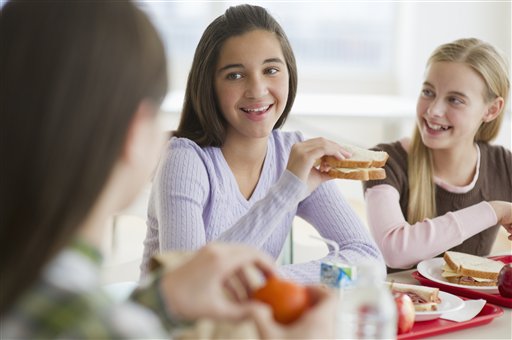A group of children was gathered around the exhibit, paddles in hand eager to denounce another food deemed unhealthy by the National Institutes of Health.
The game is called "Go, Slow, and Whoa!" Think Red Light, Green Light, but for educating kids on the danger of white bread. Kids who attended the USA Science and Engineering Festival this weekend in Washington, D.C., could play the taxpayer-funded game and were given green, yellow, and red paddles.
Green is for go, used for foods the NIH thinks should be eaten all the time: low-fat, fewer calories, and no sugar. The Gos include canned tuna, broccoli, oats, and low-fat string cheese.
Yellow, or slow, is used for foods that should be eaten sometimes, like 100 percent fruit juice, or a whole egg cooked with no fat.
Red is for Whoa!, and is used for foods the NIH says should only be eaten on special occasions. Red foods include whole milk, cheddar cheese, French fries, onion rings, hot dogs, bacon, tater tots, Fruit Loops, pancakes, and Swiss cheese.
"A peanut butter and jelly sandwich on white bread is a WHOA food," the NIH explains. "But if you use whole-grain bread, sugar-free jelly, and low-fat peanut butter, it becomes a SLOW food."
The kids caught on quickly. A delicious-looking chocolate-glazed donut flashed across the television screen. They raised their red paddles in unison. Some of the parents clapped.
The cost to taxpayers for children to play "Go, Slow, Whoa!" at the science fair was $3,071, for printing and graphic design costs, the NIH told the Washington Free Beacon. But the game’s origins and cost runs back decades.
"The ‘Go, Slow, Whoa!’ content was developed by [National Heart, Lung, and Blood Institute] NHLBI-funded researchers as part of the [Child and Adolescent Trial for Cardiovascular Health] CATCH trial in the 1990s," an agency spokesperson said.
"The content referenced was part of a formerly funded national public health program called ‘We Can,’" the spokesperson said. "The content developed was part of an anti-obesity effort designed to translate science to real-world behavior change. The content was designed in response to the growing obesity epidemic in the United States."
"According to the CDC, approximately 17 percent, or 12.7 million children and adolescents aged 2-19 years, are considered to be obese," they added. "Obesity in childhood can add up to health problems—often for life. In adults, obesity is linked to increased risk of heart disease, type 2 diabetes (high blood sugar), high blood pressure, certain cancers, and other debilitating and costly chronic conditions."
"Go, Slow, Whoa!" is a byproduct of the CATCH trial. The study, which began in 1998, was the "largest school-based health promotion" ever funded in the United States, with the goal to reduce fat and saturated fat offered in school meals and increase the amount of gym time in elementary schools.
The study received $589,919 over two years.
